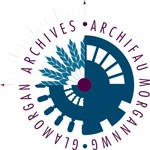
Emily Evelina R. Connell was born in West Derby, Liverpool in 1871. She had three sisters and two brothers. Her father, Rowland William Connell, was a corn merchant from Cork. Emily trained as a nurse and the census tells us that in 1911 she was working in Bideford, Devon. In 1910 she had enrolled in the Embodied Territorial Force Nursing Service (TFNS).
The TFNS was established in 1908 as a reserve force to provide, if required, up to 23 hospitals to care for service men from the Territorial or Reserve army. In the event of war it was planned that each hospital would cater for 520 patients to be housed in a school or other public buildings vacated by their residents at the time of mobilisation, and each hospital would be staffed by 91 trained nurses.
Howard Gardens School in Cardiff was one of the 23 hospitals established by the end of September 1914; it was known as the 3rd Western Hospital. By November 1915 it was reported that there were 1100 hospital beds in the sectional hospitals of the 3rd Western General Hospital (Western Mail 16 November 1915). The expansion from the original planned number was achieved by appropriating further schools in Cardiff for use as hospitals. The scale of the operation was exemplified in a report in the South Wales Echo for 4 July 1916:
“Wounded soldiers to the number of 320 from the Front arrived in Cardiff at 4 o clock this afternoon. All the cases were sitting injuries being mostly gunshot wounds and the majority are able to walk unaided to the motors which were waiting. Some of the Tommies, who appear in capital spirits, were wounded as recently as yesterday morning. The soldiers were distributed to Howardian (40), King Edward VII Hospital (10), Albany Road (70), Splott (50), Lansdowne (75), Ninian Park (75).”

Emily Connell was appointed as a Staff Nurse in September 1914 and worked at the Howard Gardens hospital throughout the war. Her wartime records can be accessed at the National Archives (W0/399/10514). To qualify as a Staff Nurse in the TFNS, civilian nurses were required to be over 23 years of age with at least three years training in a hospital or infirmary. The only surviving record with Emily’s age stated that she was 41 in 1919. In fact she would have been 47 (possibly 48) when demobilised in November 1919. From her annual reports she was clearly a very competent nurse. A testimonial from Dame Sidney Brown, Matron in Chief, in 1920 stated:
“Miss Connell has good professional ability. She is a capable surgical and medical nurse and has had charge of the Shell Shock patients in a Section of one of the Base Hospitals. She has shown ability in dealing with these cases on night duty. She is reliable and tactful and had done Charge Sister’s duties with success. Miss Connell has rendered very good service for over five years and was awarded the Royal Red Cross 2nd Class in June 1916 for good work and valuable service.”

Emily Connell’s autograph book was signed by around 100 wounded soldiers and sailors from 1915 to 1918. The 3rd Western Hospital catered primarily for the wounded from France and Belgium but also received many men wounded in the Gallipoli campaign in 1915. The majority were soldiers from Britain, Australia, Canada and New Zealand. Most contributed a short verse, a cartoon or a sketch. However, the common factor was the thanks registered to Staff Nurse Connell and her colleagues for the care that they had received.

By 1919 Emily Connell was on sick leave with her progress being monitored by regular medical boards. In response to the proposal that she leave the TFNS she replied on 3 July 1919:
“My father died in Feb of this year. I have no home, no means and unable to work. When I was mobilised in Sept 1914 I left my post and went to Cardiff. I was quite fit then. Now I have had to resign the post which they kept open for me until April 30 1919 when I told them I was going to have an operation and it would be some months before I could return. It is not right to cast me adrift after serving form 4 ½ years and being rendered unfit by that service”.
Although this appeal was successful Emily Connell was demobilised on 25 November 1919. In March 1920 Dame Sydney wrote
“I wish you all happiness in your future life. Her Majesty, Queen Alexandria, has graciously given permission for you to retain your TFNS Badge permanently, as you have completed four years’ good service during the war.”
Emily Connell died in Wallasey in 1944 aged 72 years.
Tony Peters, Volunteer at Glamorgan Archives







